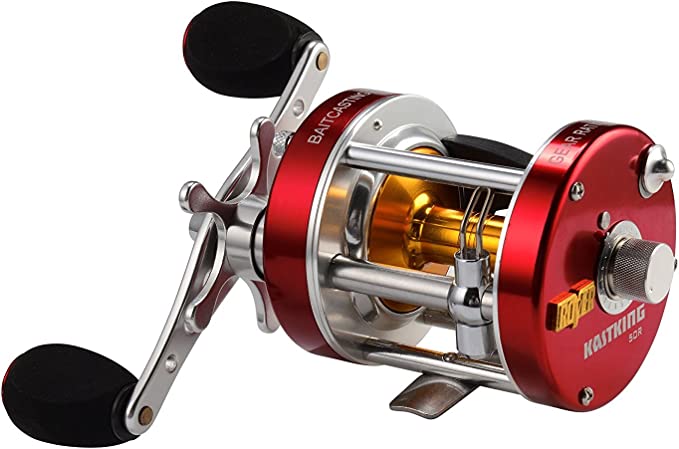BIG HORN OUTDOORS Wood Pellet Pizza Oven: Elevate Your Outdoor Cooking Experience
Update on Sept. 6, 2025, 6:39 a.m.
There’s a moment, standing before a true Neapolitan pizza oven, that feels like staring into the heart of a captured star. A wave of heat, so intense it feels solid, washes over you. Inside, a roaring fire licks the domed ceiling, casting a hypnotic, dancing light. A pizzaiolo, with movements honed over generations, slides a disc of dough into the inferno. Not three minutes, not even two. In 90 seconds, it emerges transformed: blistered, puffed, and fragrant. It is less a product of cooking, and more a product of beautiful, controlled violence.
What is this sorcery? What ancient pact with the elements allows this transformation, a feat your sophisticated, digitally-controlled home oven, with all its modes and settings, can never hope to replicate?
The answer isn’t magic. It’s physics. Brutal, elegant, and, until recently, largely inaccessible physics. But to understand how a modern, affordable backyard oven can finally unlock these secrets, we first need to understand why your kitchen oven is fundamentally lying to you about the nature of heat.

The Ancient Quest for Violent Heat
Your home oven is a master of gentle, ambient heat. It excels at slowly raising the temperature of a roast or patiently baking a cake through prolonged exposure to warm air. It is, in essence, a hot-air sauna. But a pizza oven, from the ancient communal bakeries of Pompeii to the hallowed tiled domes of Naples, is a completely different beast. It is a thermal battery.
For millennia, the goal was the same: build a structure with immense thermal mass—thick brick, stone, and clay—and pour hours of fiery energy into it. The oven stores this heat within its very walls. When the fire dies down to embers, the walls themselves become the source of heat, radiating it with incredible intensity. This ability to deliver a massive amount of energy in a very short amount of time, a concept known as high heat flux, is the first secret to perfect pizza. It’s what allows the crust to spring to life, its gluten structure setting and exterior crisping before the interior moisture can steam out and turn it tough.
Your kitchen oven, with its thin metal walls, has virtually no thermal mass. It cannot store energy in this way. It can only produce a gentle, continuous flow of heat, which is why your homemade pizzas often end up either sadly pale and doughy, or dry and cracker-like.

The Anatomy of an Inferno
The heart of that thermal power is the fire itself. But not all fire is created equal. The lazy, smoky flame of a campfire is a far cry from the clean, white-hot jet of flame in a high-performance oven. The difference lies in the efficiency of combustion.
Modern portable ovens have mastered this through a clever fuel source: hardwood pellets. These are not just wood chips; they are engineered biofuel. By compressing sawdust under extreme pressure, virtually all moisture is eliminated, and the density is radically increased. When they burn in a well-ventilated chamber, they don’t just smolder; they undergo a process of rapid pyrolysis, where the solid wood is almost instantly vaporized into flammable gases. The result is an incredibly efficient, high-energy combustion that releases heat at a ferocious rate.
This is the engine. It’s a miniature jet thruster, converting solid fuel into pure thermal power with astonishing speed. But how that power is delivered to the pizza is where the true genius lies.

The Sacred Trinity of Heat Transfer
Cooking a pizza in under two minutes requires a synchronized attack from three distinct forms of heat transfer. This is the holy trinity of thermodynamics at work.
Radiation: The Invisible Blowtorch
This is the most powerful and misunderstood force inside the oven. As the fire rages, it heats the domed ceiling to an extreme temperature—often well over $1000^\circ F$ ($540^\circ C$). At this temperature, the dome itself becomes a powerful radiator, blasting the top of the pizza with invisible infrared energy.
Think of it like standing in the sun on a cool day; it’s not the air that warms your face, but the direct radiation from 93 million miles away. Inside the oven, the dome acts as a miniature, captive sun, just inches from the pizza. This intense black-body radiation is what sears the toppings and creates the iconic charred blisters—the leopard spotting or cornicione—on the crust. It’s a top-down attack of pure energy.
Convection: The River of Fire
As the fire burns, it creates a current of superheated air and gases. The classic dome shape of a pizza oven is no accident; it’s an aerodynamic masterpiece. It forces this river of hot gas to roll across the ceiling, washing over the top of the pizza before exiting through the chimney at the front. This is convection. It’s what melts the cheese evenly and cooks the toppings nestled on the sauce. The chimney is crucial, creating a draft—the “stack effect”—that continuously pulls fresh oxygen into the fire and exhausts the hot gases, maintaining a stable, circulating inferno.

Conduction: The Final, Searing Kiss
While the top of the pizza is being assaulted by radiation and convection, its bottom is engaged in a more intimate battle. It rests directly on the oven floor, the hearth. Heat flows directly from the hot surface into the dough in a process called conduction. But the material of this surface is critical. If it transfers heat too slowly, the bottom will be pale and soggy. If it transfers heat too quickly (like steel), it will burn before the top is cooked.
This is why high-end pizza ovens use a specific type of ceramic stone, typically cordierite. This material is a marvel of material science. Its primary superpower is an incredibly low coefficient of thermal expansion. In simple terms, it can handle extreme, sudden temperature changes without cracking—a phenomenon known as thermal shock. Furthermore, its porous nature helps wick moisture away from the bottom of the dough, ensuring a crisp, not soggy, foundation. It delivers heat at a perfect, “Goldilocks” rate.
The $200 Compromise: Hacking Physics for the Backyard
For decades, accessing this trifecta of heat was the exclusive domain of restaurants with five-ton, custom-built brick ovens. This is where modern engineering delivers its masterstroke. A product like the BIG HORN OUTDOORS JF23001 isn’t trying to be a brick oven; it’s cleverly hacking the same physical principles in a lightweight, affordable package.
It’s a case study in brilliant engineering trade-offs.
- Instead of the massive thermal mass of brick, it uses a thin stainless steel body. This means it can’t store heat for hours, but it also means it can heat up in 15 minutes and weighs only 42 pounds. It sacrifices thermal storage for thermal agility.
- The stainless steel dome isn’t as perfect a radiator as a soot-covered brick ceiling, but at the temperatures generated by wood pellets, it becomes an incredibly effective source of infrared radiation, successfully replicating the top-down searing effect.
- As users note, these ovens often lack insulation. This isn’t a flaw; it’s a deliberate design choice. Adding insulation would increase cost, weight, and complexity, violating the core goal of accessibility. The trade-off is lower fuel efficiency—it burns through pellets faster because heat is constantly escaping. But for the price of a few scoops of pellets, you gain access to a cooking environment previously unattainable.
This is the compromise: it perfectly mimics the methods of heat transfer (radiation, convection, conduction) while sidestepping the ancient requirement of massive thermal mass. It allows a home cook to command the same physical forces as a Neapolitan master, learning to manage the dynamic system of fuel, airflow, and rotation that defines the craft.
The next time you bite into a truly great slice of pizza, with its crisp-yet-tender crust and beautifully charred spots, know that you are not just tasting cheese and tomatoes. You are tasting the delicious, edible result of applied physics. You are tasting the triumph of radiation, the dance of convection, and the searing kiss of conduction. And thanks to some clever engineering, that cosmic dance is finally a spectacle we can all conduct in our own backyards.







































